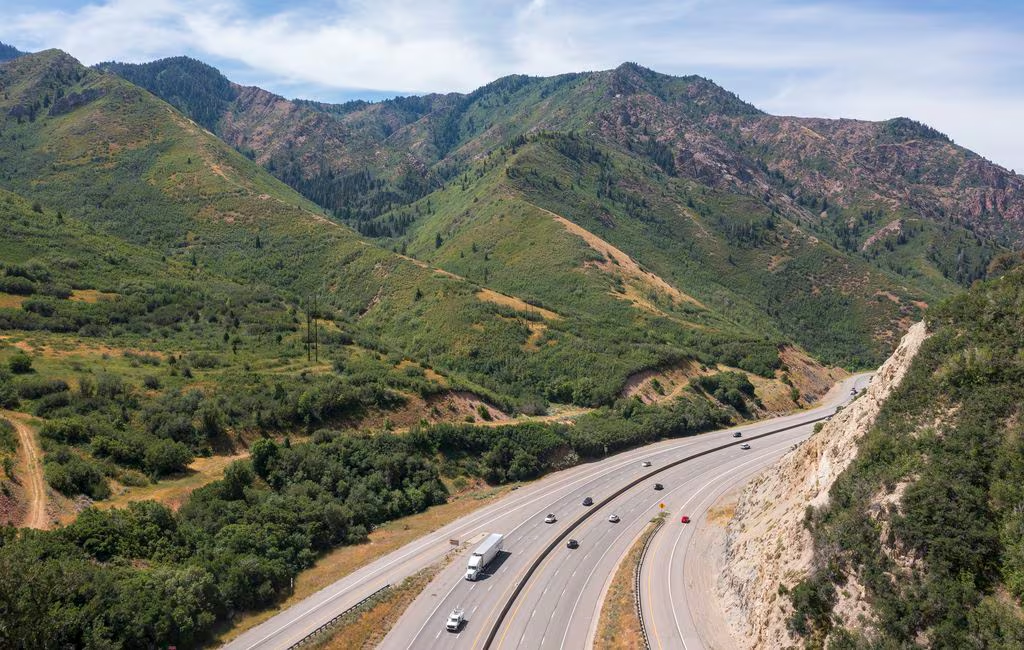In November 2021, to the surprise of residents along the Wasatch Front, Salt Lake Tribune reported on an application filed before the Department of Oil, Gas, and Mining (DOGM) for a 634-acre limestone quarrying and gravel pit operation located in the area northeast of Grandeur Peak and southwest of Mount Aire, approximately two miles from the mouth of Parley’s Canyon. The total disturbed area would be a maximum of 634 acres (Note: one square mile is 640 acres).
For comparison,
- the Harper/Kilgore Quarry (est. 1886), the existing gravel pit in Parleys Canyon has disturbed 67 acres and currently operates on 11 acres, which is 1.7% the size of the proposed new Parleys Canyon quarry (634 acres).
- the Bingham Copper Mine (since 1906, 116 years) visible from the Salt Lake Valley is 1,900 acres– this proposed mine would be one-third that size; still an opposing and permanent scar on the mountainside.
The size and scope of the proposed mine would be the largest mining operation within the Wasatch Front since the establishment of the Point of the Mountain quarry. The estimated operational life of this new gravel pit is ~100 years.
Once the mountainside is blasted, dug out, and hauled away, this gravel pit would leave a one-square-mile permanent scar in Parleys Canyon on the north slope of Grandeur Peak, leaving residents, hikers, backcountry skiers, travelers, and wildlife with severely degraded habitat, water, and air.
Why Should Officials Reject this Proposal?
Misuse of Forestry & Recreation Zone Land
- The proposed site is located in Salt Lake County’s forestry & recreation zones (FR-20).
- FR-20’s purpose is to protect these natural & scenic resources for future generations.
- Nothing could be less compatible with protecting these lands than excavating them.
- The Utah Supreme Court issued an opinion in a 2004 ruling against the expansion of the existing gravel pit (Harper/Kilgore).
Risk to Air Quality
- Gravel pits are harmful to air quality due to the high volume of fugitive dust they emit.
- This dust carries toxins such as crystalline silica, which is a carcinogen known to damage lung tissue and function.
-
The proposed Parleys Canyon gravel pit would create an estimated 220 million pounds of mine and processing waste over its life expectancy of about 100 years. This waste material contains hazardous limestone dust powder, which releases airborne crystalline silica, a Group 1 carcinogen.
-
Despite the gravel pit operator’s best efforts, persistent canyon winds make suppressing fugitive dust nearly impossible.
- The current Harper/Kilgore gravel pit in Parleys Canyon has a dismal track record for air quality and causing fugitive dust; and was denied expansion by the Utah Supreme Court in 2004.
Risk to Water Supply
- Fugitive dust from the proposed gravel pit is not only a threat to our air quality, but also to our increasingly scarce water supply
- Parleys Canyon, has Mountain Dell Reservoir, Parleys Creek, many springs, is a designated watershed for the Salt Lake Valley. This dust would create a new source of pollution for Salt Lake City’s drinking water as it falls into the reservoirs and streams in the canyon. It would also accelerate snowmelt in the spring leaving less water to runoff into the reservoirs through the later summer months.
- The proposed gravel pit would also need to use enormous quantities of water for rock-crushing operations and in an attempt to suppress fugitive dust. This would not only divert water from reaching the Great Salt Lake, but it would risk also contaminating stormwater that flows into Parleys Creek.
Risk To Economic Growth
- Pulverizing our wild canyon foothills into a gravel pit is also an economic problem.
- The #1 reason people move to live (and consequently work and invest) in Utah is our unique outdoor recreation resources
- The #1 reason high-tech employees in the Point of the Mountain area (home to another huge gravel pit) leave Utah is poor air quality.
- This gravel pit would therefore impair Utah’s #1 economic asset (outdoor recreation) and inflate Utah’s #1 economic liability (air quality).
-
It would also scar the scenic gateway to both Utah’s capitol city and to the Park City area ski and film festival destinations.
Risks to Homeowners
- Mount Aire Canyon is the site of historical structures that date back to the late 1800s.
- Many of the 100+ year-old homes in the Mount Aire Community are built on stilts or with unreinforced stone.
- Most of these homes are within one-quarter to one mile as the crow flies from the proposed mining area.
- There will be an increased risk of avalanches and rockslides from blasting and crushing operations.
- Blasting noise would be a new and constant intrusion for Mt Aire homeowners.
- There would be significantly increased semi-truck traffic at the Mt Aire exit (Exit 132) and along 1-80, estimated at over 140 trucks per day at peak operations.
- Mt Aire Canyon has only one point of egress at the mouth so that a rapidly spreading wildfire could trap residents in the canyon with no safe way of escape.
Risk of Wildfires and Habitat Destruction
- While air, water, and economics are critical factors; local communities and ecosystems would be the most severely affected.
- The Parleys Canyon wildfire in 2021 (caused by sparks from one car’s catalytic converter) highlights the area’s wildfire risk.
- Industrializing these 634 acres would elevate wildfire and other physical risks for the neighboring communities in Mt Aire Canyon, Lambs Canyon, and Summit Park.
- This gravel pit would also displace the known presence of elk, deer, lynx, bobcat, moose, black bear, mountain lion, golden eagle, and other species
Please join us in the fight to protect our canyons of the Wasatch Front.










